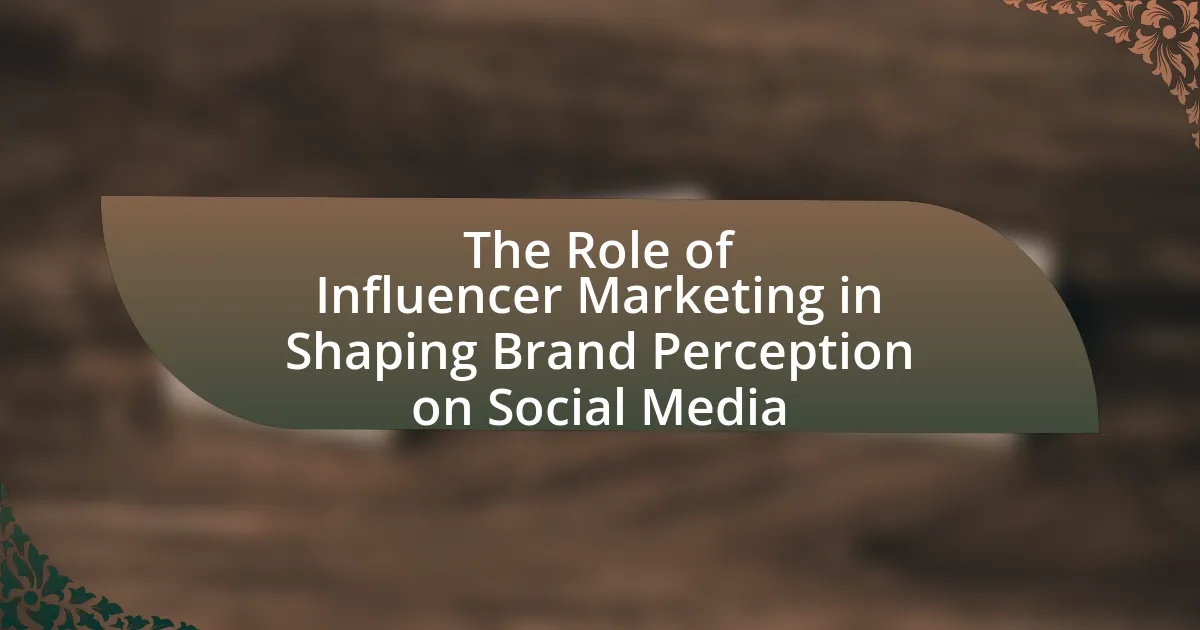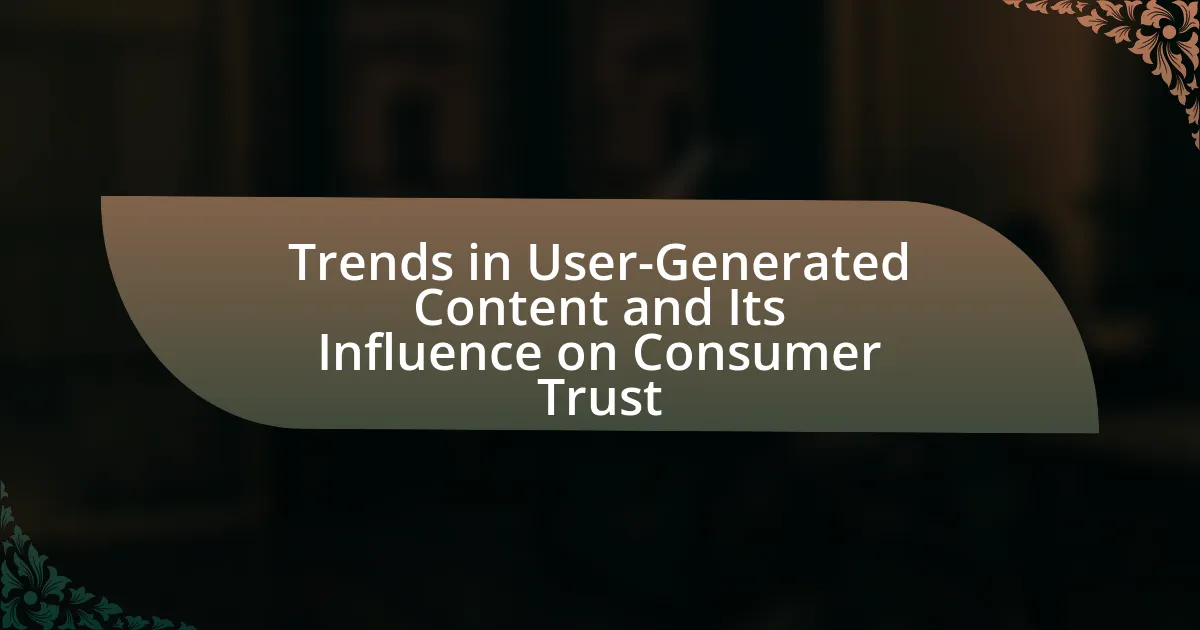The article focuses on successful social media campaigns and the insights gained from analyzing them through case studies. It defines successful campaigns as strategic marketing efforts that engage target audiences and achieve business objectives, highlighting metrics such as engagement rates, reach, and ROI to measure success. Notable examples, including the ALS Ice Bucket Challenge and Nike’s “Just Do It,” illustrate effective strategies like audience targeting and compelling storytelling. The article emphasizes the importance of tailoring campaigns to specific platforms and audiences, as well as the value of learning from past successes and failures to enhance future marketing efforts.

What are Successful Social Media Campaigns?
Successful social media campaigns are strategic marketing efforts that effectively engage target audiences, drive brand awareness, and achieve specific business objectives. These campaigns utilize platforms like Facebook, Instagram, Twitter, and LinkedIn to create compelling content that resonates with users, often leveraging trends, user-generated content, and interactive elements. For instance, the ALS Ice Bucket Challenge in 2014 raised over $115 million for ALS research through viral participation and social sharing, demonstrating the power of community engagement and emotional appeal in successful campaigns.
How do we define success in social media campaigns?
Success in social media campaigns is defined by measurable outcomes that align with specific goals, such as increased brand awareness, engagement rates, lead generation, and conversions. For instance, a campaign may be deemed successful if it achieves a 20% increase in engagement compared to previous campaigns, or if it generates a significant number of leads that convert into sales. Metrics such as reach, impressions, click-through rates, and return on investment (ROI) provide concrete evidence of a campaign’s effectiveness, allowing marketers to assess performance against established objectives.
What metrics are used to measure success?
Metrics used to measure success in social media campaigns include engagement rate, reach, impressions, conversion rate, and return on investment (ROI). Engagement rate quantifies interactions such as likes, shares, and comments relative to total followers, indicating audience involvement. Reach measures the total number of unique users who see the content, while impressions count how many times the content is displayed, regardless of clicks. Conversion rate tracks the percentage of users who take a desired action, such as signing up or making a purchase, reflecting campaign effectiveness. ROI evaluates the financial return generated from the campaign compared to its cost, providing a clear picture of profitability. These metrics collectively offer a comprehensive view of a campaign’s performance and impact.
How do different platforms influence success metrics?
Different platforms influence success metrics by shaping audience engagement, content reach, and conversion rates. For instance, Instagram’s visual-centric approach leads to higher engagement rates for brands in fashion and lifestyle sectors, with studies showing that posts with images receive 650% higher engagement than text-only posts. In contrast, LinkedIn’s professional environment fosters B2B interactions, where success metrics are often measured by lead generation and professional networking, resulting in a 277% higher lead conversion rate compared to other platforms. Each platform’s unique features and user demographics dictate how success is defined and measured, emphasizing the need for tailored strategies to optimize performance across different social media channels.
Why are case studies important for understanding social media campaigns?
Case studies are important for understanding social media campaigns because they provide real-world examples of strategies, outcomes, and lessons learned. By analyzing specific campaigns, marketers can identify effective tactics, understand audience engagement, and measure the impact of different approaches. For instance, a case study on the ALS Ice Bucket Challenge illustrates how a viral campaign can leverage social media to raise awareness and funds, achieving over $115 million in donations within a few months. This concrete evidence demonstrates the power of strategic social media use, allowing practitioners to replicate successful elements in their own campaigns.
What insights can we gain from analyzing past campaigns?
Analyzing past campaigns provides insights into effective strategies, audience engagement, and areas for improvement. By reviewing metrics such as conversion rates, engagement levels, and audience demographics, marketers can identify which tactics resonated with their target audience. For instance, a study by HubSpot found that campaigns utilizing personalized content saw a 42% higher click-through rate compared to generic messaging. This data underscores the importance of tailoring campaigns to specific audience segments. Additionally, analyzing failures can reveal pitfalls to avoid, enhancing future campaign planning and execution.
How do case studies help in strategizing future campaigns?
Case studies help in strategizing future campaigns by providing real-world examples of successful tactics and strategies that have been implemented in similar contexts. They offer insights into what worked, what didn’t, and the reasons behind those outcomes, allowing marketers to make informed decisions based on empirical evidence. For instance, a case study on a viral social media campaign may reveal the importance of timing, audience engagement, and content type, which can be directly applied to future campaigns to enhance effectiveness. By analyzing metrics such as engagement rates and conversion statistics from these case studies, marketers can identify best practices and avoid common pitfalls, ultimately leading to more successful campaign outcomes.

What are Some Notable Examples of Successful Social Media Campaigns?
Some notable examples of successful social media campaigns include the ALS Ice Bucket Challenge, Nike’s “Just Do It” campaign, and Dove’s “Real Beauty” campaign. The ALS Ice Bucket Challenge raised over $115 million for ALS research in 2014, significantly increasing awareness and donations for the disease. Nike’s “Just Do It” campaign, launched in 1988, has become a cultural phenomenon, inspiring countless individuals and contributing to a substantial increase in sales. Dove’s “Real Beauty” campaign, initiated in 2004, focused on body positivity and self-esteem, leading to a 700% increase in sales over a ten-year period. These campaigns exemplify how effective messaging and engagement can drive significant social impact and business success.
What campaigns have achieved significant engagement and reach?
The Ice Bucket Challenge is a campaign that achieved significant engagement and reach, raising over $115 million for ALS research in just a few months. This campaign went viral in 2014, with millions of participants sharing videos on social media platforms, leading to widespread awareness of amyotrophic lateral sclerosis. The campaign’s success can be attributed to its interactive nature, encouraging users to challenge friends, which created a ripple effect across various demographics and platforms.
What strategies did these campaigns employ?
Successful social media campaigns employed strategies such as targeted audience engagement, compelling storytelling, and data-driven content optimization. Targeted audience engagement involved identifying specific demographics and tailoring messages to resonate with those groups, which increased interaction rates. Compelling storytelling created emotional connections with audiences, making the campaigns memorable and shareable. Data-driven content optimization utilized analytics to refine messaging and posting times, ensuring maximum reach and effectiveness. For instance, campaigns like the Ice Bucket Challenge effectively used these strategies to achieve viral success, raising over $115 million for ALS research in just a few months.
How did the target audience influence campaign design?
The target audience significantly influenced campaign design by dictating the messaging, visuals, and platforms used in the campaigns. Understanding the demographics, preferences, and behaviors of the target audience allowed marketers to tailor content that resonates with them, ensuring higher engagement rates. For instance, campaigns aimed at younger audiences often utilize platforms like TikTok and Instagram, employing vibrant visuals and trending music to capture attention, while campaigns targeting older demographics may focus on Facebook with more informative content. This strategic alignment with audience characteristics has been shown to increase conversion rates, as evidenced by a study from HubSpot, which found that personalized marketing can lead to a 20% increase in sales.
What lessons can we learn from these successful campaigns?
Successful campaigns teach us the importance of understanding the target audience and crafting tailored messages that resonate with them. For instance, the Ice Bucket Challenge effectively engaged participants by combining a fun challenge with a charitable cause, leading to over $220 million raised for ALS research in just a few months. Additionally, consistency in branding and messaging, as demonstrated by Nike’s “Just Do It” campaign, reinforces brand identity and fosters customer loyalty. These campaigns also highlight the value of leveraging social media platforms for wider reach and engagement, as seen in the viral nature of the #MeToo movement, which raised awareness on a global scale.
What common themes emerge from the analysis of these campaigns?
Common themes that emerge from the analysis of successful social media campaigns include audience engagement, authenticity, and strategic storytelling. Audience engagement is crucial, as campaigns that foster interaction and community involvement tend to achieve higher visibility and impact. For instance, the Ice Bucket Challenge effectively engaged participants by encouraging them to share their experiences, resulting in over $220 million raised for ALS research. Authenticity resonates with audiences, as brands that communicate genuine values and messages build trust; Dove’s Real Beauty campaign exemplifies this by promoting body positivity and inclusivity. Lastly, strategic storytelling enhances emotional connections, as seen in Nike’s “Just Do It” campaign, which inspires and motivates through relatable narratives. These themes collectively highlight the importance of connecting with audiences on a personal level while maintaining a clear and authentic brand message.
How can these lessons be applied to different industries?
Lessons from successful social media campaigns can be applied across various industries by leveraging targeted audience engagement, strategic content creation, and data analytics. For instance, the retail industry can adopt personalized marketing strategies seen in successful campaigns, enhancing customer interaction and driving sales. The healthcare sector can utilize social media to disseminate information and engage with patients, similar to how brands have effectively communicated health messages during crises. Additionally, the technology industry can implement feedback loops from social media interactions to refine product offerings, as demonstrated by companies that have adapted their services based on user-generated content. These applications are supported by case studies showing increased brand loyalty and customer satisfaction when businesses effectively engage with their audiences on social media platforms.

How Can We Apply Insights from Case Studies to Future Campaigns?
Insights from case studies can be applied to future campaigns by identifying successful strategies and tactics that have proven effective in similar contexts. For example, analyzing a case study of a viral social media campaign reveals that targeted audience engagement and personalized content significantly increased user interaction. This is supported by data showing that campaigns with tailored messaging achieve up to 50% higher engagement rates compared to generic approaches. By leveraging these insights, marketers can refine their strategies, optimize content for specific demographics, and enhance overall campaign effectiveness.
What best practices should be adopted from successful campaigns?
Successful campaigns should adopt the best practices of clear objectives, audience targeting, engaging content, and data analysis. Clear objectives ensure that campaigns have measurable goals, which can lead to higher success rates; for instance, campaigns with defined goals are 376% more likely to achieve them, according to a study by the Content Marketing Institute. Audience targeting allows campaigns to reach the right demographics, increasing engagement and conversion rates; research shows that targeted campaigns can improve ROI by up to 400%. Engaging content, such as storytelling and interactive elements, fosters a deeper connection with the audience, leading to higher retention and sharing rates. Finally, data analysis enables continuous improvement by assessing what works and what doesn’t, with companies that leverage data-driven strategies seeing a 5-6% increase in productivity, as reported by McKinsey.
How can we tailor these practices to fit our brand’s voice?
To tailor practices to fit your brand’s voice, first, clearly define your brand’s core values and personality traits. This foundational understanding allows you to align your messaging, tone, and content style with your brand identity. For instance, if your brand is known for being playful and innovative, incorporate humor and creativity into your social media campaigns. Research shows that brands with a consistent voice can increase customer loyalty by up to 30%, as consumers are more likely to engage with brands that resonate with their values and preferences. Therefore, regularly review and adjust your content strategies to ensure they reflect your brand’s unique voice while remaining relevant to your audience.
What pitfalls should we avoid based on past failures?
To avoid pitfalls based on past failures in social media campaigns, organizations should steer clear of inconsistent messaging, which can confuse audiences and dilute brand identity. For instance, the 2017 Pepsi ad featuring Kendall Jenner faced backlash for trivializing social justice movements, leading to a public relations crisis. Additionally, neglecting audience engagement can result in missed opportunities for connection; the 2018 Fyre Festival exemplified this, as poor communication led to disastrous outcomes. Lastly, failing to analyze data and adapt strategies can hinder success; the 2019 Burger King “Whopper Detour” campaign showed that leveraging data effectively can enhance customer engagement and drive sales.
What tools and resources can assist in developing effective social media campaigns?
Effective social media campaigns can be developed using tools such as Hootsuite, Buffer, and Sprout Social for scheduling and analytics, along with Canva and Adobe Spark for graphic design. Hootsuite and Buffer allow users to manage multiple social media accounts, schedule posts, and analyze engagement metrics, which is essential for optimizing campaign performance. Sprout Social provides in-depth analytics and reporting features that help in understanding audience behavior and refining strategies. Canva and Adobe Spark enable the creation of visually appealing content, which is crucial for capturing audience attention. According to a 2021 report by HubSpot, 54% of marketers prioritize visual content in their social media strategies, highlighting the importance of design tools in effective campaign development.
Which analytics tools are most effective for measuring campaign success?
Google Analytics, HubSpot, and Hootsuite are among the most effective analytics tools for measuring campaign success. Google Analytics provides comprehensive insights into website traffic and user behavior, allowing marketers to track conversions and assess the effectiveness of their campaigns. HubSpot offers robust marketing analytics features, including lead tracking and ROI measurement, which help in evaluating campaign performance. Hootsuite specializes in social media analytics, enabling users to monitor engagement metrics and audience growth across various platforms. These tools are widely recognized for their ability to deliver actionable data that informs strategic decisions in marketing campaigns.
How can content creation tools enhance campaign engagement?
Content creation tools enhance campaign engagement by enabling marketers to produce high-quality, visually appealing content quickly and efficiently. These tools often include features such as templates, analytics, and collaboration capabilities, which streamline the content creation process and allow for real-time adjustments based on audience feedback. For instance, a study by HubSpot found that campaigns utilizing visual content receive 94% more views than those without, demonstrating the effectiveness of engaging visuals in capturing audience attention. Additionally, tools that facilitate social media scheduling and performance tracking help marketers optimize their content distribution, leading to increased interaction rates and overall campaign success.
What are the key takeaways for creating impactful social media campaigns?
Key takeaways for creating impactful social media campaigns include understanding your target audience, crafting compelling content, and utilizing data analytics for optimization. Understanding your target audience allows for tailored messaging that resonates, as evidenced by campaigns like Nike’s “Dream Crazy,” which effectively engaged diverse demographics. Crafting compelling content, such as visually appealing graphics and engaging storytelling, enhances user interaction, demonstrated by Coca-Cola’s “Share a Coke” campaign that personalized experiences. Finally, utilizing data analytics enables continuous improvement; for instance, Facebook’s ad platform provides insights that help refine targeting and messaging strategies, leading to higher engagement rates.




